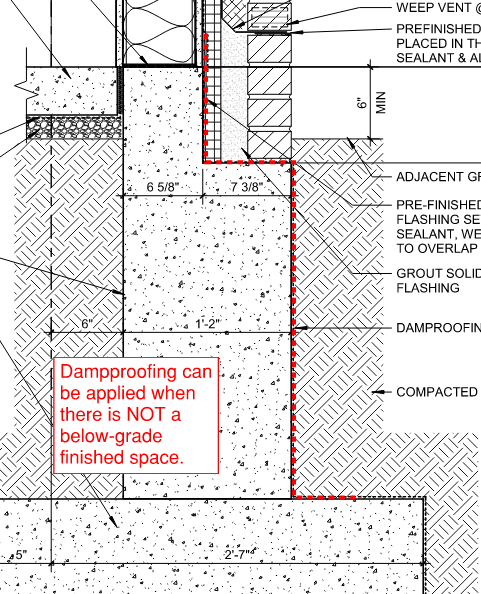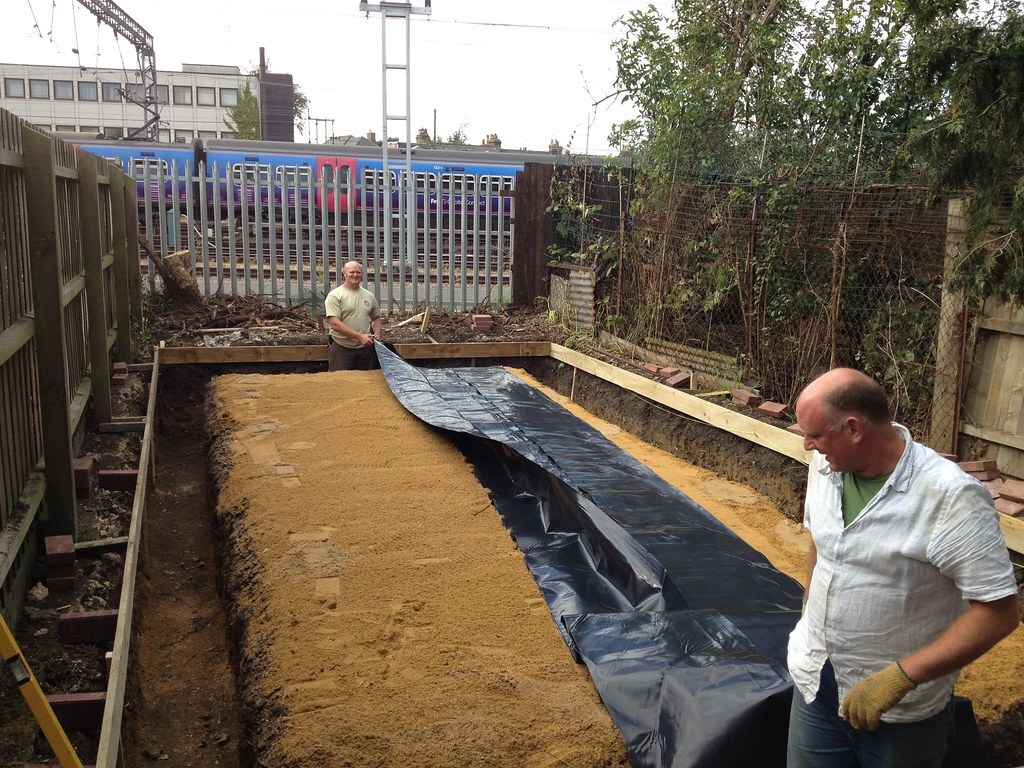Prevent structural damage with proactive damp removal newcastle
Prevent structural damage with proactive damp removal newcastle
Blog Article
Recognizing the Relevance of Damp Proofing in Stopping Structural Damage
Wet proofing works as a vital defense versus wetness infiltration in buildings. This protective measure can protect against substantial architectural damage, yet lots of homeowner remain not aware of its significance. Identifying the indications of dampness and recognizing the different solutions readily available can be vital. Nonetheless, ignoring wet proofing can result in extreme consequences. What are the particular threats and solutions that homeowner should think about?
What Is Damp Proofing and Just How Does It Function?
Wet proofing works as an important barrier against wetness breach in buildings. mould removal newcastle. This process entails using details products and methods to protect against water from penetrating walls, floors, and other structural components. Typically, damp proofing can be achieved via the installation of wet proof membrane layers, coverings, or using specialized sealants.These approaches work by creating a protective layer that hinders moisture movement, making sure that the indoor atmosphere continues to be completely dry and healthy and balanced. Wet proofing is specifically vital in locations susceptible to high moisture or groundwater, as it assists preserve the integrity of the framework over time.Moreover, effective damp proofing adds to power effectiveness by preventing warm loss associated with damp settings. By attending to prospective moisture issues before they escalate, damp proofing works as an aggressive action in securing structures from the harmful effects of water damages, eventually lengthening their life-span and preserving their worth
Common Indicators of Moisture in a Building
Dampness issues within a building can show up via numerous obvious indications that suggest the existence of dampness. One prominent indication is the appearance of water stains on wall surfaces or ceilings, which typically suggests moisture seepage. Additionally, bubbling or peeling paint can recommend that excess moisture is trapped beneath the surface, leading to damage. One more common sign is the visibility of mold and mold, which thrive in moist conditions and can typically be identified by their musty odor. A surge in moisture degrees can create condensation on home windows and various other surface areas, highlighting wetness issues. Finally, uneven or deformed flooring might signify underlying dampness that endangers architectural integrity. Identifying these signs early can assist reduce potential damage and preserve a risk-free living environment. Normal inspections and prompt activity are important in resolving wetness problems prior to they escalate.
The Risks of Overlooking Damp Proofing
Neglecting moist proofing can bring about significant risks to a building's architectural stability, as moisture build-up might deteriorate walls and foundations. In addition, extended dampness develops an atmosphere favorable to mold growth, presenting significant carcinogen to owners. Addressing these dangers is necessary for making sure both safety and security and durability of the building.
Structural Honesty Risks
They expose their buildings to considerable structural stability threats when house owners forget the importance of reliable wet proofing. Extended moisture seepage can result in the advancement of mold, which weakens foundational components and can jeopardize overall security. Additionally, excess wetness can deteriorate concrete and brickwork, leading to cracks and architectural failings. Timber elements are particularly at risk; they can rot and lose load-bearing capacity, positioning major threats to the structure's framework. In addition, untreated moist problems might draw in bugs, such as termites, which better exacerbate structural wear and tear. Ultimately, disregarding damp proofing actions can lead to expensive repair services and possible safety dangers, emphasizing the necessary role of aggressive damp administration in maintaining the stability of properties.
Carcinogen Issues
Just how can a seemingly small oversight lead to serious health and wellness threats? Overlooking moist proofing can create an atmosphere for mold and mildew development, which postures considerable wellness threats. Mold and mildew spores can activate sensitive reactions, respiratory system problems, and other health problems, especially in susceptible populations such as youngsters, the elderly, and individuals with pre-existing conditions. Furthermore, consistent dampness can draw in parasites like rodents and insects, which carry conditions that further jeopardize health and wellness. The presence of dampness additionally adds to a decline in indoor air top quality, exacerbating asthma and other respiratory ailments. As a result, the failure to deal with moist issues not just intimidates architectural honesty yet likewise jeopardizes the health of occupants, highlighting the essential demand for efficient moist proofing steps.
Various Sorts Of Damp Proofing Solutions
Different variables can add to damp issues in structures, choosing the ideal moist proofing remedy is essential check here for preserving structural stability. Numerous choices are offered, each tailored to details conditions.One usual service is a damp-proof membrane layer (DPM), generally constructed from polyethylene or asphalt, which is installed in wall surfaces and floorings to stop wetness ingress. Another option is damp-proof training courses (DPC), which are layers of water-proof product placed within wall surfaces to block rising damp.Chemical damp proofing includes infusing waterproofing chemicals into walls to produce an obstacle versus dampness. Additionally, exterior treatments such as tanking, which involves using a water resistant layer to the outside of foundations, can be effective in protecting against water penetration.Each remedy has its advantages and is chosen based upon the building's certain issues, environmental problems, and long-lasting upkeep considerations, ensuring optimal defense versus damp-related damage.

The Expense of Damp Damages vs. Avoidance
Comprehending the financial ramifications of moist damages compared to prevention highlights the importance of positive actions. The prices connected with damp damages can be significant, including repair work to architectural components, mold removal, and potential health-related costs. Home owners may deal with substantial monetary stress if substantial damages happens, leading to increased insurance coverage costs and shed residential or commercial property value.In comparison, purchasing moist proofing solutions is generally even more cost-effective. First expenses for prevention approaches, such as setting up damp-proof membrane layers or boosting drain systems, are often outweighed by the long-term financial savings from staying clear of expensive repair services. In addition, stopping wet issues can enhance a building's general value and appeal, making it a wise financial investment. When assessing the cost of damp damages versus avoidance, it ends up being clear that taking proactive actions can guard financial rate of interests and keep the stability of the residential property over time.
Picking the Right Damp Proofing Technique for Your Residential or commercial property
Which wet proofing technique is most suitable for a certain home often depends upon various elements, including the structure's age, existing wetness concerns, and neighborhood ecological conditions. For older frameworks, standard approaches such as bitumen membranes or cementitious finishes might be much more efficient, as they can provide a robust obstacle versus climbing damp. In contrast, more recent structures may take advantage of modern-day solutions like infused damp-proof courses, which are much less intrusive and can be tailored to specific moisture challenges.Additionally, residential or commercial properties in locations with high water tables or heavy rainfall may need advanced methods, such as cavity wall surface drain systems or external waterproofing. Home owners ought to likewise take into consideration the details products made use of in their building's building, as some methods may not work. Eventually, a comprehensive evaluation by a specialist can lead residential property owners in selecting the most reliable wet proofing method tailored to their distinct conditions.
Keeping Your Damp Proofing System With Time
Routine maintenance of a moist proofing system is important for guaranteeing its long-lasting performance and shielding a home from moisture-related damage. Building proprietors must conduct routine inspections to recognize any kind of indications of wear or concession in the moist proofing layer. This includes monitoring for fractures, peeling paint, or mold growth, which might show wetness intrusion.Additionally, it is suggested to tidy gutters and downspouts consistently to stop water accumulation around the structure. If deterioration is observed.Engaging specialist solutions for routine assessments can better enhance the resilience of the system, reapplying membrane layers or sealers may be necessary. These specialists can provide understandings right into possible vulnerabilities and advise timely fixings.
Frequently Asked Concerns
Exactly How Lengthy Does Damp Proofing Treatment Last Before Requiring Repair Work?
The long life of wet proofing therapy typically ranges from 10 to thirty years, relying on elements such as the approach utilized, ecological problems, and upkeep techniques. Normal assessments can help establish when repair services might be essential.
Is DIY Damp Proofing Effective Contrasted to Specialist Providers?
The performance of do it yourself wet proofing differs considerably. mould treatment newcastle. While some individuals may achieve adequate results, expert solutions normally assure extensive options, leveraging experience and top quality materials to stop future issues more reliably than most do it yourself efforts
Can Damp Proofing Improve Indoor Air High Quality?
The concern of whether wet proofing can improve indoor air quality develops frequently. Effective damp proofing lowers dampness degrees, thereby lessening mold and mildew development and allergens, eventually contributing to a much healthier indoor environment for residents.
Exist Certain Rules for Damp Proofing in Different Locations?
Rules for damp proofing differ by area, typically influenced by neighborhood building ordinance and ecological problems. Compliance guarantees effective dampness control, advertising and securing frameworks security, which highlights the need for adherence to these details policies.

What Are the Long-Term Benefits of Proper Damp Proofing?
The long-term advantages of appropriate moist proofing include boosted structural honesty, lowered upkeep prices, enhanced interior air top quality, and boosted property worth. These advantages add to a much healthier living atmosphere and prolonged lifespan of structures. Typically, damp proofing can be attained with the installation of wet evidence membranes, finishings, or the use of specialized sealants.These approaches function by developing a safety layer that inhibits wetness movement, guaranteeing that the indoor atmosphere stays healthy and balanced and completely dry. Moist proofing is specifically essential in locations susceptible to high moisture or groundwater, as it aids maintain the integrity of the structure over time.Moreover, efficient damp proofing contributes to power performance by avoiding heat loss linked with wet environments. Disregarding moist proofing can lead to substantial risks to a structure's architectural integrity, as wetness buildup may weaken walls and structures (damp removal newcastle). Different factors can contribute to damp concerns in structures, selecting the ideal wet proofing solution is vital for maintaining structural integrity. Which damp proofing technique is most appropriate for a details home often depends on numerous elements, consisting of the building's age, existing moisture concerns, and regional environmental problems
Report this page